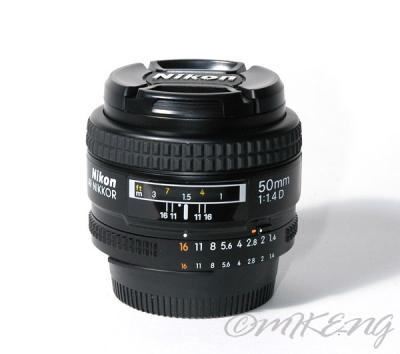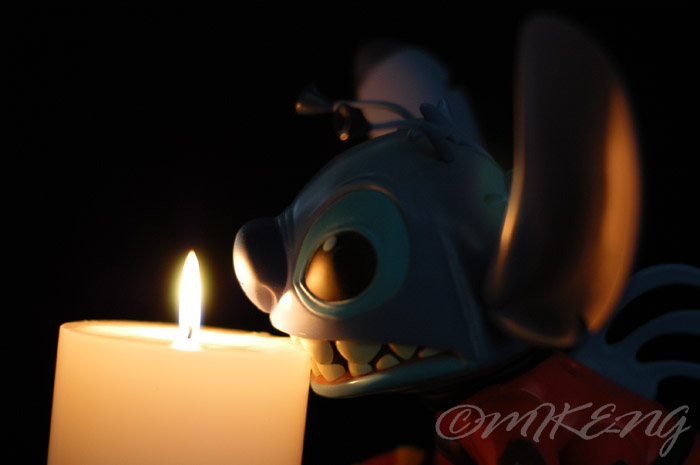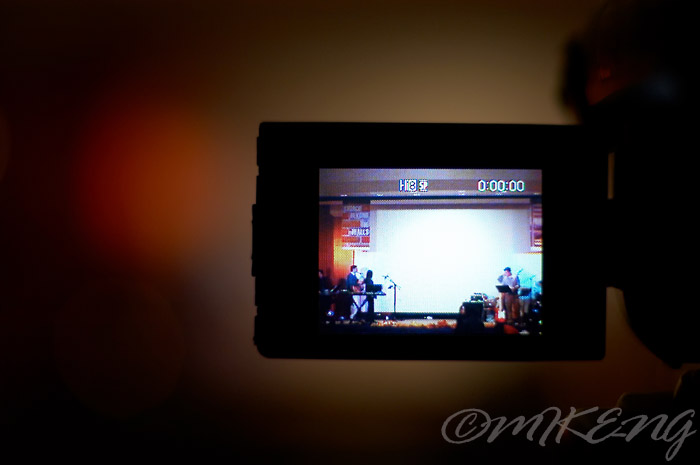





 |
 |
 |
 |
 |
 |
| Michael Ng | profile | all galleries >> Photo Gear & Reviews >> Nikon 50mm f/1.4D AF | tree view | thumbnails | slideshow |

Lens Specifications: Filter Size: 52mm f/Stop Range:1.4-16 Minimum Focus Distance:1.8' Magnification:1:6.8 Angle of View:46 Degrees Elements/Groups:7/6 Length:2.1" Maximum Diameter:2.5" Weight:0.49 lb New Price: USD$269.95 Used Price: USD$185-220 (mint) |
|
I must have gone through a good two to three units of this lens in my time as a photography enthusiast. Not because I didnít like the images I was getting but because I had midrange zooms that I were more convenient to use, thus leaving this poor lens spending most of its time just sitting around. However I kept missing the wide aperture that this lens features. Not only was the capability of this lens to isolate a subject from its background really good, the ability to use faster shutter speeds in unforgiving situations is unquestionably golden. I also was missing an exceptional lens in the midrange to fill the gap between my venerable 17-35mm f/2.8D and 70-200mm f/2.8G so once again, this lens made its way back to my arsenal. Out of the box: You get a clear plastic push-on cap as a standard accessory together with the pinch-style front cap. I suggest that you get a proper LF-1 rear cap to protect the rear element. No other goodies apart from the lens and paperwork. A HR-2 hood is left as an optional accessory. Features: This lens has a clear window for the distance scale. There is also DOF markings for apertures of f/16 and f/11, which may come in handy if your SLR does not come with a DOF preview function. This lens takes 52mm diameter filters, which is probably the most common filter thread in the consumer level market. So finding compatible filters should be the least of your worries. As most of my lenses have 77mm filter threads, Iíll have to look to step up adapter rings to fit my 77mm filters. Another good thing about this diameter is that I can mount my SB-29s ring-light for some creative portraiture. This lens features 7 aperture blades for more natural looking out of focus highlights. However I would have preferred 9 blades, as the more blades you have, the rounder your aperture opening is, yielding even more pleasing out of focus elements. Mounted on a Nikon DSLR with an APS-C sized sensor (1.5x crop factor), the 50mm yields a Field Of View (FOV) of a 75mm lens. Thus in a way you have yourself a pretty decent alternative to the Nikon 85mm f/1.4D which costs more than four times as much.  The ultimate "Birthday Cake" lens. Well, anything candlelit really. Handling: This lens, like all normal lenses is small and compact. The Made in China version is lighter than its Japanese predecessors because of the increased use of plastic materials. It also sports a new rubberized grip on the focusing ring, as opposed to the plastic one found in the earlier versions. Manual focusing is smooth but not very damped. Not the best manual focus action Iíve experienced, but I use AF most of the time on this lens so itís a non-issue. AF is quick on a F100 body and noticeably slower on a D100. Iíve realized that Iíve been spoiled by AF-S technology, so the AF performance on the 50mm f/1.4D isnít something to shout about. But it serves its purpose. Image Quality: With the extremely thin DOF wide open at f/1.4 you have to be mindful of whatís in focus. It is very easy to take a shot and then when post processing wonder what you were focusing on in the first place. This lens isnít very forgiving in that sense. Wide open, this lens also exhibits a fair amount of purple fringing (see picture) and flaring. But when stopped down, these problems are alleviated somewhat. But I wonít write this lens off as an underperformer as very few lenses do perform wide open. Stopped down, sharpness does improve and the sweet spot of this lens is around f/2.8. Other reviews have noted that this lens isnít perfectly corrected for distortion and that it exhibits some barrel distortion for nearby objects. I wouldnít be too concerned about it as distortion is barely noticeable in my opinion.  Purple fringing is noticable at the highlights of the teeth. Bokeh or out of focus elements on this lens is creamy. The best results are achieved when the subject is very much closer to the camera than the background. Here is an image demonstrating that. The background is a stage with a white screen and a band on both sides. The subject is a LCD screen from a video camera. As you can see, the details of the background have been blurred beyond recognition. Shutter: 1/320s Aperture: f/1.6 
Conclusion: Surprisingly it seems as though Nikon didnít put much thought into producing this lens. Standard lenses have been in production for a very long time and given its simple design one might think that all the issues should have been nailed down. Despite its shortcomings wide open, the 50mm f/1.4D is still a very versatile lens. It provides photographers the privilege of having decent shutter speeds in low light at a very practical focal length which is neither too short nor too long. Being the cheapest f/1.4 AF lens from Nikon at an affordable price of about USD$200 in the used market, the 50mm f/1.4D is a lens that should be part of every photographerís rig.  Stopped down at f/16, this lens is extremely sharp and great for product shots. ----------------------------------SIDE NOTES:---------------------------------- Comparison to the 50mm f/1.8D: Some people just canít seem to justify paying more than double for the extra bit of a stop that they gain and therefore go for the f/1.8D alternative. Some users even claim that the f/1.8D is better corrected for distortion and is a hint sharper than the f/1.4D. As perceivable sharpness is really relative (varies for each individual), I suggest that you take everything with a pinch of salt. My advice would be to try both lenses if you have the opportunity and pick the one that gives you the best results. Offloading either one of these lenses isnít a problem as thereís a pretty big demand for this lens. Made in China vs. Made in Japan: After a couple of years of producing the 50mm f/1.4D and non-D versions in Japan, just like its f/1.8D brother, production moved to China. Apparently the newer Made in China ones have more plastic components in them, as Nikon looks to be trying to decrease the cost of producing these lenses. And as you can predict, the street price of this lens has not budged. As a consolation for your pretty penny, you get the newer pinch-style caps which are a total joy to use. There are a couple of Made in Japan ones floating around the second hand market. But they are extremely rare. I do foresee them fetching a higher price for those who think it the difference actually matters. Word on the street is that all the Nikon USA models now are made in China, while you may get lucky getting a Japanese one going Grey Market. ©Michael Ng 2005 |
| comment | share |
| hsk | 22-Jul-2010 09:50 | |
| Peter | 13-Dec-2009 23:36 | |
| Pavan | 17-Apr-2007 13:52 | |
| Guest | 19-Jan-2007 05:15 | |
| Guest | 03-Jan-2007 20:45 | |
| Iris | 26-Aug-2006 02:57 | |